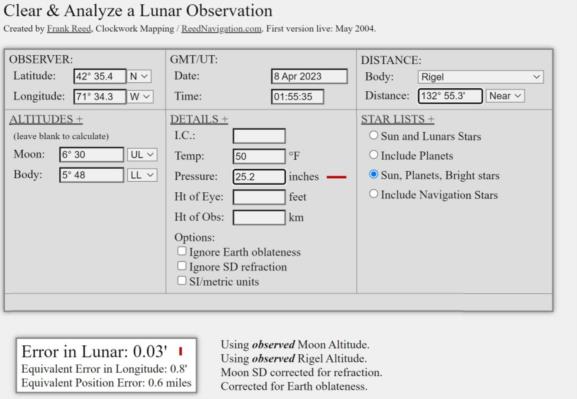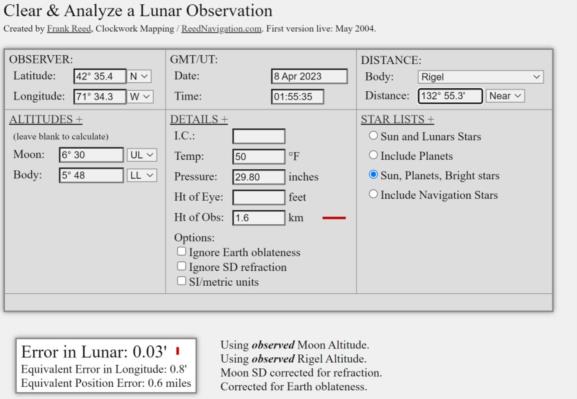
NavList:
A Community Devoted to the Preservation and Practice of Celestial Navigation and Other Methods of Traditional Wayfinding
From: Frank Reed
Date: 2023 Apr 9, 12:18 -0700
Greg Herdt, you wrote:
"The air pressure in Rio Rancho (ca. 5280 ft above Sea Level) is about 0.83x of Sea Level. I used 29.8x0.83 = 24.73 inches of pressure and 45°F (temp when I was shooting last night) in Frank's Lunar App."
You can do it that way, certainly. But there is an input for observer altitude above sea level in my app that's built-in. The result is essentially the same (as you would expect). Here's a sample case knocked together yesterday: A Moon-Rigel Lunar with both bodies at low altitude. I'm attaching three screen captures. One with no correction for air pressure or altitude above sea level, one corrected by barometric pressure alone, and a third with a direct correction for altitude above sea level.
Short story for anyone following along who is puzzled by this: Thick air refracts more; thin air refracts less, and refraction calculations assume average air. Refraction has a significant impact when bodies are low in the sky, and also when observers are low in the atmosphere (near sea level). So, with slightly annoying ambiguity of meaning but fortunately in the same direction, low altitude implies greater refraction. We can accommodate a higher altitude (above sea level) observation by manually reducing the air pressure, or we can do the same by keeping the normal reported barometric pressure and including a factor for reduced air density above sea level. That's what this comparison shows. It works either way, as expected.
Incidentally, this is a relatively minor point that I wanted to mention while I was thinking of it. I will get back to you, Greg, with a better reply later today. :)
Frank Reed









